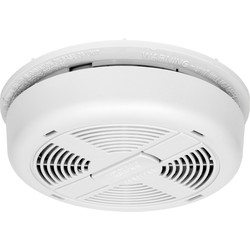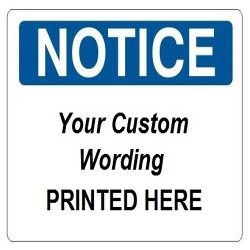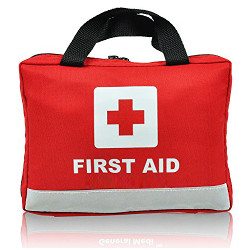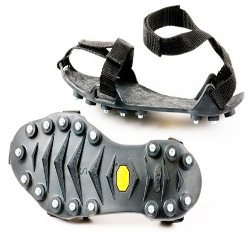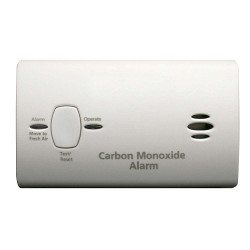Residential
Brunswick Fyr & Safety is your source for residential safety accessories, inspections and training.
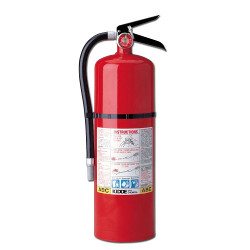 There are three types of common fires and two specialty classes. It is important to match the proper fire extinguisher to the size of the area you are protecting and the potential hazard. This is why fire extinguishers contain different agents and are listed for specific classes of fire. Fires are classified into five groups:
There are three types of common fires and two specialty classes. It is important to match the proper fire extinguisher to the size of the area you are protecting and the potential hazard. This is why fire extinguishers contain different agents and are listed for specific classes of fire. Fires are classified into five groups:
Class A fires involve common combustibles such as wood, paper, cloth, rubber, trash and plastics. They are common in typical commercial and home settings, but can occur anywhere these types of materials are found. Examples include: trash, wood, paper and cloth.
Class B fires involve flammable liquids, gases, solvents, oil, gasoline, paint, lacquers, tars and other synthetic or oil-based products. Class B fires often spread rapidly and, unless properly secured, can re-flash after the flames are extinguished. Examples include: flammable liquids, gases and solvents.
Class C fires involve energized electrical equipment, such as wiring, controls, motors, data processing panels or appliances. They can be caused by a spark, power surge or short circuit and typically occur in locations that are difficult to reach and see. Examples include: electrical equipment.
Class K fires involve combustible cooking media such as oils and grease commonly found in commercial kitchens. The new cooking media formulations used for commercial food preparation require a special wet chemical extinguishing agent that is especially suited for extinguishing and suppressing these extremely hot fires that have the ability to re-flash. Examples include: combustible cooking media.
Class D fires involve combustible metals such as magnesium and sodium. Combustible metal fires are unique industrial hazards which require special dry powder agents. Examples include: combustible metals.
HOW TO USE A FIRE EXTINGUISHER
All fires can be very dangerous and life-threatening. Your safety should always be your primary concern when attempting to fight a fire! Here are some tips on using a fire extinguisher:
- Always stand with an exit at your back
- Stand several feet away from the fire, moving closer once the fire starts to diminish, using the PASS method:
- Pull the pin at the top of the extinguisher. The pin releases a locking mechanism and will allow you to discharge the extinguisher
- Aim at the base of the fire, not the flames. This is important – in order to put out the fire, you must extinguish the fuel
- Squeeze the lever slowly. This will release the extinguishing agent in the extinguisher. If the handle is released, the discharge will stop
- Sweep from side to side. Using a sweeping motion, move the fire extinguisher back and forth until the fire is completely out. Operate the extinguisher from a safe distance, several feet away, and then move towards the fire once it starts to diminish. Be sure to read the instructions on your fire extinguisher – different fire extinguishers recommend operating them from different distances. Remember: aim at the base of the fire, not at the flames
- If possible, use a “buddy system” to have someone back you up or call for help if something goes wrong
- Be sure to watch the area for a while to ensure it doesn’t re-ignite
Never fight a fire if:
- The fire is spreading rapidly. Only use a fire extinguisher when the fire is in its early stages. If the fire is already spreading quickly, evacuate and call the fire department
- You don’t know what is burning. Unless you know what is burning, you won’t know what type of fire extinguisher to use. Even if you have an ABC extinguisher, there could be something that will explode or produce highly toxic smoke
- You don’t have the proper fire extinguisher. The wrong type of fire extinguisher can be dangerous or life-threatening
- There is too much smoke or you are at risk of inhaling smoke. Seven out of ten fire-related deaths occur from breathing poisonous gases produced by the fire.
Any sort of fire will produce some amount of carbon monoxide, the most deadly gas produced by a fire. Materials such as wool, silk, nylon and some plastics can produce other highly toxic gases such as carbon dioxide, hydrogen cyanide, or hydrogen chloride. Beware – all of these can be fatal.
Smoke inhalation or exposure to fire itself can be life-threatening so get educated about the basics in CPR and burn treatment.
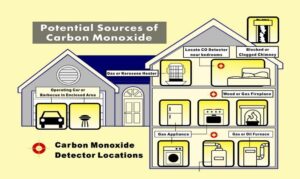 Carbon monoxide (CO) poisoning can happen within a matter of minutes and is responsible for more deaths than any other single poison. This odourless, colourless poison can hurt you slowly in low levels, cause permanent neurological dysfunctions in moderate levels or take lives in higher levels. Protection against this deadly poison is as easy as installing a simple carbon monoxide detector in your home or office.
Carbon monoxide (CO) poisoning can happen within a matter of minutes and is responsible for more deaths than any other single poison. This odourless, colourless poison can hurt you slowly in low levels, cause permanent neurological dysfunctions in moderate levels or take lives in higher levels. Protection against this deadly poison is as easy as installing a simple carbon monoxide detector in your home or office.
A CO detector should be placed on every floor in the home to provide the best protection.

